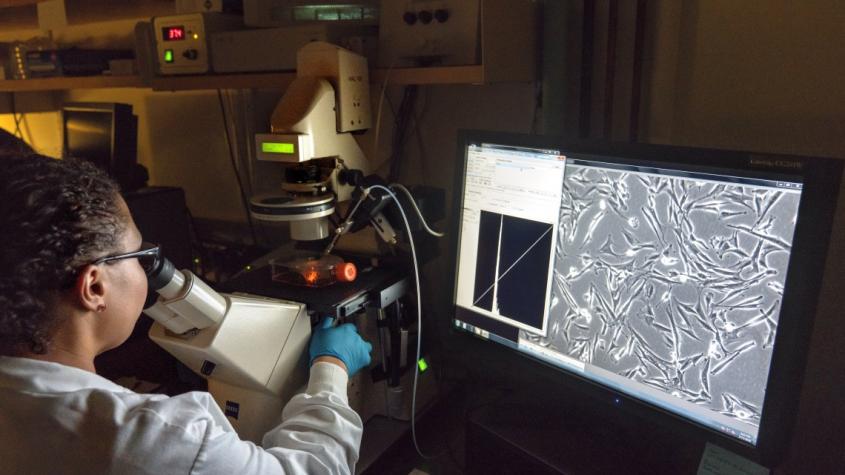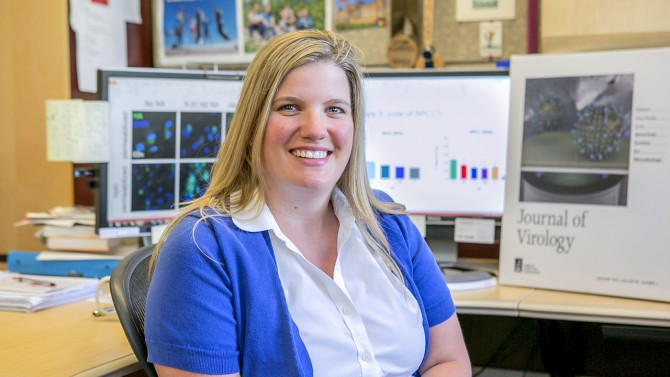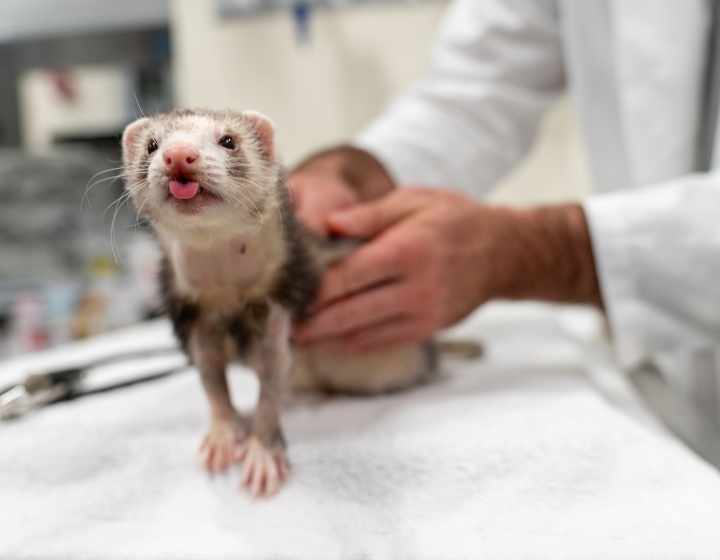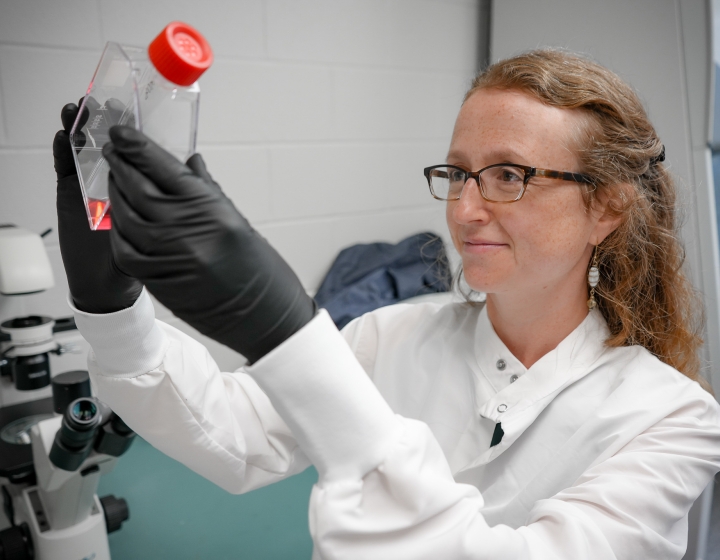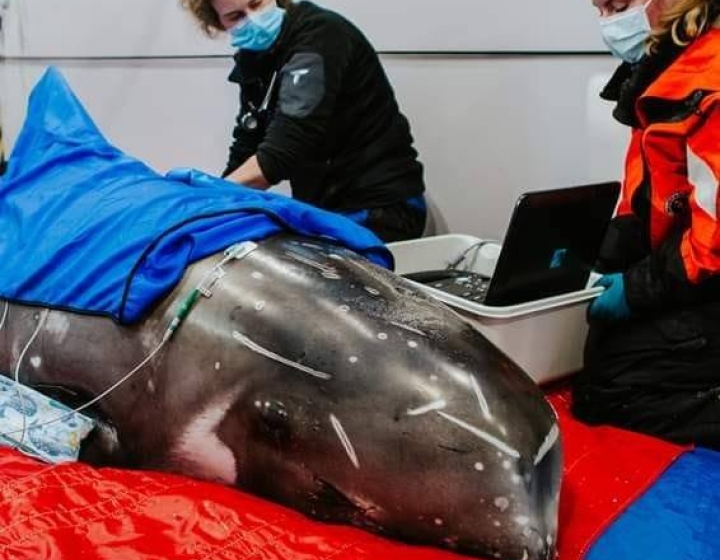Pandemic injects new urgency into coronavirus collaborations
Cornell University announced a suspension of noncritical research on March 15. Among the research deemed critical were projects essential for the understanding and reduction of COVID-19.
Dr. Susan Daniel is an associate professor of chemical and biomolecular engineering in the College of Engineering. Her lab specializes in the biophysics of cell membranes and is studying membrane fusion, a critical part of the mechanism by which coronaviruses infect and spread. Dr. Gary Whittaker is professor of virology in the College of Veterinary Medicine and a section chief in infectious disease epidemiology in the Master of Public Health program, and an expert on coronaviruses. His lab has been studying the structure and transmissibility of SARS-CoV-2, the virus that causes COVID-19.
Together, Daniel and Whittaker – along with numerous other colleagues across the university’s colleges and campuses, and a working group of core laboratories – have been collaborating to better understand the virus at the center of this global pandemic, with the aim of treatment and containment.
How did the change in research priorities affect your research programs, and how quickly were you able to pivot or refocus any of your work not related to COVID-19?
Gary Whittaker: Well, between the two of us we were already a coronavirus lab, studying human and animal coronaviruses (mainly in felines), so it wasn’t really a case of refocusing or pivoting – it was more a case of embracing and expanding. This is a new virus, and we just needed to wrap this new virus into our ongoing work, to see how it would fit with everything else that was going on with our research. It did give us an opportunity to expand and go into some new areas, maybe ones we’ll get to in terms of therapeutics that weren’t quite our focus before. We’re very well positioned to follow all of this up.
Susan Daniel: Gary and I have actually been collaborating since 2008, and together we’ve been funded by the NIH on coronavirus research for a couple of years. As Gary mentioned, some of the things we’re working on now that we weren’t doing before COVID hit was testing possible therapeutics. Our basic research had shown that calcium ions are important in the infection process of coronaviruses; therefore, we’re now studying different FDA-approved calcium modulating drugs on SARS-CoV-2 infection. We’re also studying novel antibodies as well, ones that we initially were looking at as a research tool to help us understand some structural information, but now we are looking at those as therapeutics, too.
While my lab’s main theme is understanding cell membranes and, in this case, how viruses interact with them, in the other part of my lab, we work on many diverse themes not related to virus infection. That part of the lab has really come to a grinding halt. I can definitely sympathize with other researchers who have had to stop their research on campus. It feels like a terrible loss of progress on those fronts. Everybody’s really eager to be able to reopen in some aspect soon.
What particular approach do you each bring to coronavirus-related research, and what new connections or collaborations have you made this year?
Daniel: Cornell cultivates a fantastic environment where it’s easy to connect with people, to share your wisdom and then see where that overlay comes together to create opportunities to learn something new. So, me being an engineer collaborating with Gary in the vet college is not so unusual here, and I think our work has been a great example of the physical and the biological sciences coming together to provide new insights in the infection process of both this particular virus and others.
Thanks to the Academic Integration Initiative and Vice Provost Gary Koretzky, we also are also actively collaborating with scientists at Weill Cornell Medicine. We are expanding those partnerships to further our knowledge base, the skills and expertise that we have on our team, to advance even more what we understand about this virus.
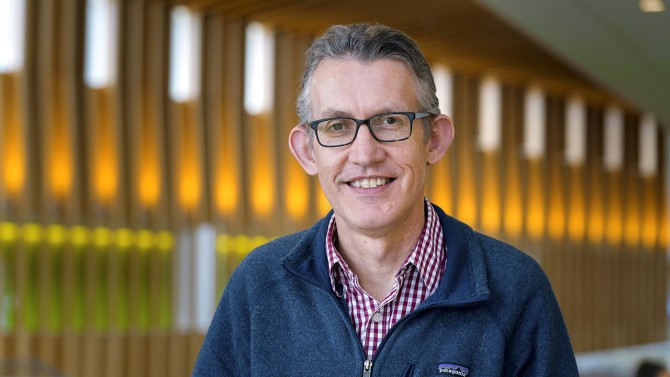
Whittaker: Overall, this is a sweet spot of overlap. I have a big interest in public health, but I was trained as a biochemist, and so I think about viruses in terms of protein structure and function. I’m trying to understand how that biochemistry may impact broader aspects of public health and the “One Health” [concept]. Cornell is a big, widely distributed place. There are not many times where the work of a shelter medicine program and the local SPCA can be linked directly into our nanofabrication facility, for example, but these are the kinds of connections we have created here in this collaborative research.
Daniel: We’ve worked with many centers across the university and benefited from that, because one single lab can’t possibly have all of that infrastructure needed. Here, the administration gets it – the provost investing in radical collaborations, for example, is a sign that they really understand what makes Cornell a unique and special place to conduct collaborative research and are willing to invest in the work we do.
Whittaker: In terms of resources, we are able to tap into a lot of very good core facilities – not only the state-of-the-art biosafety labs, but also the outstanding spectroscopy resources in chemistry and chemical biology, and we’re also able to take advantage of the nanofabrication facilities at CNF.
Has the pandemic changed your approach or strategy to understanding the structure and behavior of SARS-CoV-2?
Whittaker: It has opened my eyes even more than they already were to the widespread impact that these viruses can cause. I always knew that coronaviruses were a problem, based on how they affect cats. But it’s not just a problem with cats in shelters anymore; it has expanded into way more than that.
In a way, it has made me thankful that I chose to work on these viruses. My background was in influenza, and in 2003, when the first SARS virus hit, we adopted that virus as part of the portfolio in the lab. Over the last 17 years, the lab slowly shifted to studying coronaviruses exclusively because they’re just so scientifically fascinating.
Daniel: Coronaviruses have been on the World Health Organization’s top 10 emerging pathogens list for quite a number of years, so it was always in the back of my mind. I really enjoy studying coronaviruses. They have so many facets; it’s like a puzzle that we are trying to pick apart to understand how they really work, and then try to bring that knowledge back together to explain to others.
But now, what feels different is that in addition to working on this from an intellectual pursuit, our work could potentially feed into development of a new drug, or a process for developing a vaccine, or some general understanding that might be critical at the right moment for someone's research out there.
Whittaker: Biologically, there’s definitely a puzzle here, and we need the problem-solving aspects of engineers. My personal view is that more engineers should be doctors, for instance, because engineers are really trained to solve problems. I think the best doctors have engineering brains.
What else has Cornell been doing to advance research focused on this crisis?
Daniel: There are things at all levels. One small example is that our colleague microbiology and immunology professor Hector Aguilar-Carreno established a weekly Zoom meeting where all the virologists and anybody even peripherally interested – engineers and chemists and others across campus – could come and listen to the work that was going on in somebody’s lab. And that got us quickly in tune with who could do what and what collaborations might come out of it. So that was one place where Cornell’s spirit of collaboration and coming together moved everyone forward quickly.
Whittaker: There have definitely been some bumps in the road since the pandemic hit , as well as luck along the way, but we’re in a better place now than we were a couple of months ago. Everybody needed some flexibility to figure out how to make this all work.
Daniel: Beyond researchers, Cornell’s various staff have helped us too. For example, Cornell’s Office of Sponsored Programs, the administration and other entities across the colleges have helped us secure grants; our labs received a supplement to our NIH grant, an NSF RAPID Research grant and a COVID “fast grant” from the Emergent Ventures fellowship and grants program at George Mason University’s Mercatus Center.
As they say, it takes a village, and so the “village” of Cornell really has come together to help us use all the resources that we have to contribute what we can to solving the problem.
What is something each of you has learned during this unprecedented time?
Daniel: I think I’ve realized even more the importance of research institutions like Cornell within society and the economy. The kind of work we do isn’t necessarily something a company or industry would be doing; we’re really investing in fundamental understanding and filling in pieces of the puzzle that aren’t necessarily profit driven but need to be done to advance our society in many ways.
You need to have places within society that do this kind of work – fundamental research that is learning for the sake of understanding, and the university system is one such place. People are working on all kinds of things that eventually feed into industry, but also our health care, our public policies and even our interactions with each other. These things need a place where they can be discussed and developed.
One thing I hope will come out of this is the public’s general appreciation for how important research is at the university level, as well as our investing in graduate students and postdocs, the up-and-coming bright minds who are going to solve tomorrow’s crisis.
Whittaker: For me, one new thing – or maybe it’s something that is being reinforced – is regarding how the community understands medicine in general. There has been this idea of “personalized medicine,” which is great, but we’ve seemed to have lessened the focus on the whole public health aspect of population medicine. All the communication around testing, and talking about how to implement tests for a new virus and use that information for surveillance and contact tracing – not just for a medical diagnosis – have really brought that to light. It has reinforced the crucial connection between science and public policy.
By Joe Wilensky
This article originally appeared in Cornell's Ezra Magazine.



